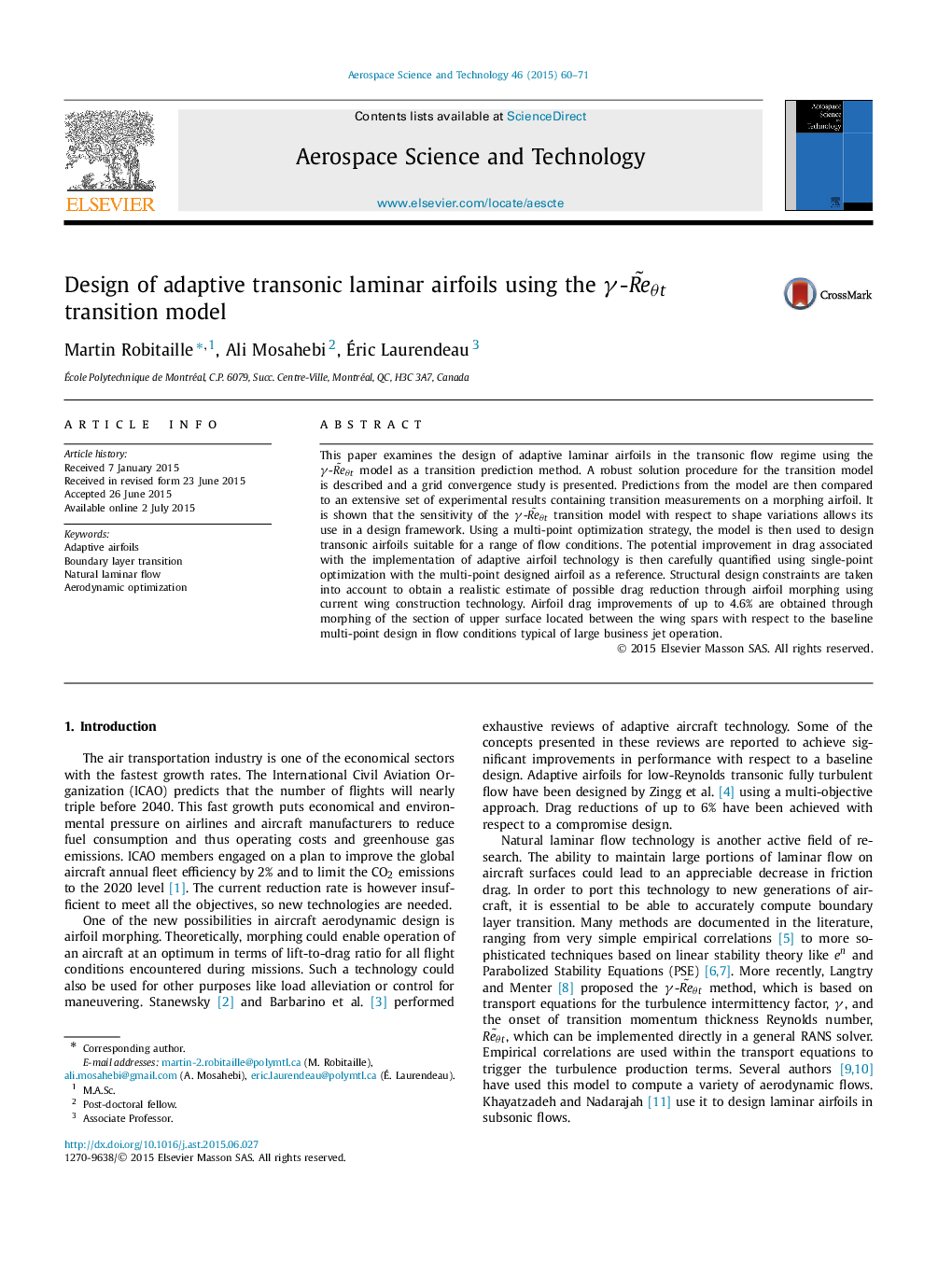| Article ID | Journal | Published Year | Pages | File Type |
|---|---|---|---|---|
| 8058804 | Aerospace Science and Technology | 2015 | 12 Pages |
Abstract
This paper examines the design of adaptive laminar airfoils in the transonic flow regime using the γ-ReËθt model as a transition prediction method. A robust solution procedure for the transition model is described and a grid convergence study is presented. Predictions from the model are then compared to an extensive set of experimental results containing transition measurements on a morphing airfoil. It is shown that the sensitivity of the γ-ReËθt transition model with respect to shape variations allows its use in a design framework. Using a multi-point optimization strategy, the model is then used to design transonic airfoils suitable for a range of flow conditions. The potential improvement in drag associated with the implementation of adaptive airfoil technology is then carefully quantified using single-point optimization with the multi-point designed airfoil as a reference. Structural design constraints are taken into account to obtain a realistic estimate of possible drag reduction through airfoil morphing using current wing construction technology. Airfoil drag improvements of up to 4.6% are obtained through morphing of the section of upper surface located between the wing spars with respect to the baseline multi-point design in flow conditions typical of large business jet operation.
Related Topics
Physical Sciences and Engineering
Engineering
Aerospace Engineering
Authors
Martin Robitaille, Ali Mosahebi, Ãric Laurendeau,
